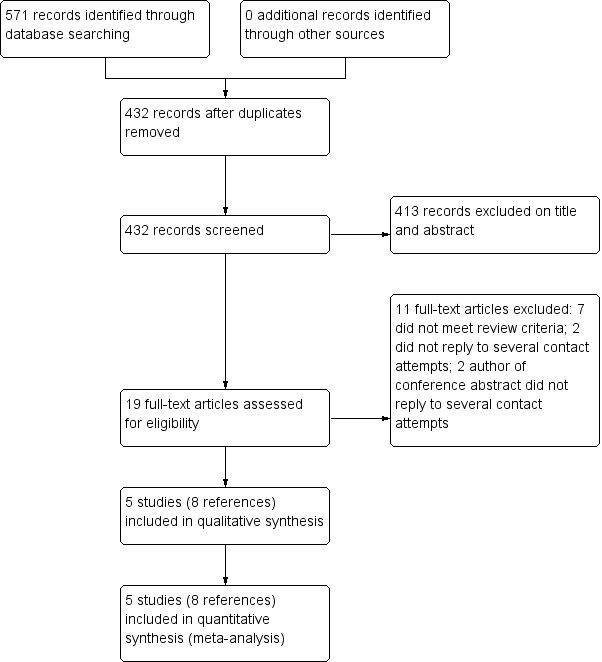Contenido relacionado
Revisiones y protocolos relacionados
Vinicius Cavalheri, Chris Burtin, Vittoria R Formico, Mika L Nonoyama, Sue Jenkins, Martijn A. Spruit, Kylie Hill | 17 junio 2019
Maria FS Torres, Gustavo JM Porfírio, Alan PV Carvalho, Rachel Riera | 6 marzo 2019
Catherine Granger, Vinicius Cavalheri | 28 septiembre 2022
Sarah Burdett, Larysa Rydzewska, Jayne Tierney, David Fisher, Mahesh KB Parmar, Rodrigo Arriagada, Jean Pierre Pignon, Cecile Le Pechoux, on behalf of the PORT Meta‐analysis Trialists Group | 11 octubre 2016
Nita Patel, Jason F Lester, Bernadette Coles, Fergus Macbeth | 20 abril 2005
José Belda‐Sanchís, Mireia Serra‐Mitjans, Manuela Iglesias Sentis, Ramon Rami | 20 enero 2010
Rosemary Stevens, Fergus Macbeth, Elizabeth Toy, Bernadette Coles, Jason F Lester | 14 enero 2015
Renée Manser, Gavin Wright, David Hart, Graham Byrnes, Don Campbell, Zoe Wainer, Sera Tort | 24 enero 2005
Catherine Delbaldo, Stefan Michiels, Estelle Rolland, Nathalie Syz, Jean‐Charles Soria, Thierry Le Chevalier, Jean Pierre Pignon | 18 abril 2012
Sarah Burdett, Jean Pierre Pignon, Jayne Tierney, Helene Tribodet, Lesley Stewart, Cecile Le Pechoux, Anne Aupérin, Thierry Le Chevalier, Richard J Stephens, Rodrigo Arriagada, Julian PT Higgins, David H Johnson, Jan Van Meerbeeck, Mahesh KB Parmar, Robert L Souhami, Bengt Bergman, Jean‐Yves Douillard, Ariane Dunant, Chiaki Endo, David Girling, Harubumi Kato, Steven M Keller, Hideki Kimura, Aija Knuuttila, Ken Kodama, Ritsuko Komaki, Mark G Kris, Thomas Lad, Tommaso Mineo, Steven Piantadosi, Rafael Rosell, Giorgio Scagliotti, Lesley K Seymour, Frances A Shepherd, Richard Sylvester, Hirohito Tada, Fumihiro Tanaka, Valter Torri, David Waller, Ying Liang, for the Non‐Small Cell Lung Cancer Collaborative Group | 2 marzo 2015












